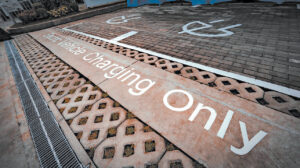Is the future of motoring (still) electric?

Yes, but not yet — at least for most of us
A TRIP to any of the advanced economies in Asia and Europe will show how ubiquitous electric vehicles (or EVs) are in the motoring landscape of these countries. The recently held Manila International Auto Show (MIAS) clearly highlighted the investments that automotive brands are making on EVs.
This is especially true for manufacturers from China, as this focus on electrics is mandated by the central government, which strongly encourages use of what it terms “new energy vehicles” in highly urbanized city centers, such as Shanghai. In Beijing, EVs are also given preference for vehicle registration, while non-EV buyers are subjected to a “license plate lottery” just to get their cars registered.
So where does that leave our market? In the ASEAN region, many other countries have already adapted government policies to encourage the use of EVs. Thailand, for example, gives substantial subsidies (equivalent to P200,000) to buyers of EVs. In Singapore, electric vehicles accounted for 12% of new car sales last year — spurred on by government incentives (worth more than P1 million) to promote the sales of EVs. Of course, Singapore is an anomaly in the region, as the prohibitively high COE (Certificate of Entitlement) means that the typical Singaporean buyer is skewed toward a more affluent demographic. This same demographic is where we may start to see some headway for EVs in the Philippine market.
I am fortunate to have experience in both the mainstream and luxury automotive segments, and it is absolutely true that the purchase considerations of mainstream automobile clients are vastly different from those in the luxury segment. EVs have already become a fixture in the premium showrooms throughout Metro Manila, and within this segment, the electrified dream has already become a present reality.
As expected, this is largely due to the luxury car buyer being able to consider the extensive number of benefits of an electric vehicle — and there are many — without being put off by a price tag that may be prohibitive for most. It also helps that many premium car buyers live in gated villages or high-end apartments, and have access to an enclosed garage with electrical access for charging. Additionally, since vehicle cost is not the primary consideration of these buyers, other more altruistic issues such as protecting air quality and preventing the depletion of fossil fuels may come into play. Though the environmental impact of the traditional internal combustion engine (ICE) is widely known, for many, the ability to find a safe and reliable mode of transportation is a more pressing necessity.
If EVs are going to establish a significant presence in the mainstream Philippine automotive market, they are going to need to have a clear fiscal benefit to the buyer.
The first, and perhaps most significant, hurdle for widespread EV sales is the cost of the vehicle itself. The cost of EV technology, specifically battery technology, has gone down drastically over the past decade. Despite this, the cost to produce an EV is still roughly double that of an equivalent ICE-powered vehicle. As mentioned earlier, some markets have established tax incentives and subsidies to push buyers toward EV choices. Over here, the Electric Vehicle Industry Development Act (EVIDA) Law held much promise in its initial versions. However, the final form that was passed turned out to be severely watered down, and the primary fiscal incentive for imported EVs is merely exemption from excise taxes, which was already available during the rollout of the TRAIN law in 2018. Perhaps the most talked-about benefit of EVs is the exemption from the UVVRP (Unified Vehicular Volume Reduction Program) in Metro Manila, commonly referred to as number coding. Being able to use your car for another day in the week, however, is not compelling enough to pay double the price for a new car. Most households would then just buy two cars, which is precisely what they did — further aggravating the traffic congestion in the city.
But what about the reduced cost of fuel? Surely, that is a strong enough reason to choose an EV. Well, if you spend P15,000 a month on fuel, and an EV is P1 million more expensive than a gasoline or diesel counterpart, then it would take more than five years for you to recover the marginal cost of the EV. And that does not even consider the increased electricity bill from home charging.
One may also argue that maintenance costs of EVs are significantly lower than traditional fossil fuel-powered engines, and that would partially offset the high upfront purchase cost. This is true, as EVs remove many of the traditional engine components that need to be tightened, lubricated, or replaced on a periodic basis. But one challenge that remains is the battery, which only has a limited number of useful charging cycles before the entire unit needs to be replaced. As most dedicated EV platforms are essentially built around the battery, the effort and cost in replacing an obsolete battery can be higher than the depreciated value of the vehicle, which can affect the resale value of an EV. One quick search on Facebook Marketplace will show that early adapters of EV technology bore the brunt of heavy depreciation. An EV with an obsolete battery is similar to a modern cellular phone with an obsolete battery. For the affluent, this simply signals the need to purchase a new unit.
Perhaps one factor that needs to also be considered in the promotion of electric vehicles is the availability and cost of electricity in our country. While we in Metro Manila often take electric supply for granted, for many of our countrymen, electricity remains to be an elusive luxury. In regions where rotating blackouts of several hours are a regular part of life, and the hum of diesel generators permeate the rural silence, how can EVs possibly gain a foothold? It doesn’t help that the Philippines continues to have one of the most expensive electricity rates in the region. And to top it all off, nearly half of the electricity produced in our country comes from the burning of coal and other fossil fuels. Without nuclear power plants, our electricity will remain expensive. And without sustainable power solutions, our electricity will remain dirty.
Hybrids provide a sort of compromise, where customers enjoy a measure of the benefits of electric propulsion, while having both feet still firmly planted in internal combustion technology.
We must remember that the whole concept of a car powered by electricity is not a new idea. Electric motors were used in the early 20th century to propel some of the first examples of horseless carriages. One of the primary reasons why the world had widely adopted internal combustion vehicles is because petrol was one of the cheapest fuels available when automobile use started gaining popularity. It made the most fiscal sense.
EVs are powerful, dependable, sustainable, enjoyable, and environmentally friendly. They are the next step in the evolution of the automobile. But until we are able to make them affordable to buy and to own, they will continue to be a dream for majority of the motoring public.
Chris Lee Yu, with 12 years of experience in the automotive industry, is an executive of The Covenant Car Company, Inc. and Scandinavian Motors Corp.




